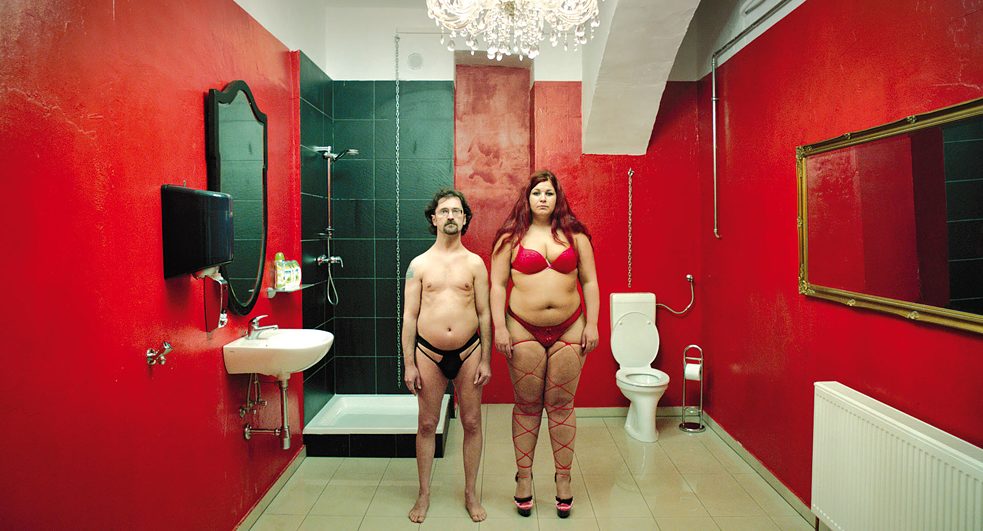In the Basement
Staged Reality

Using the technique of “staged reality,” Ulrich Seidl oversaturates “normal” background details to magnify the strangeness of his subjects in Im Keller.
By Dave K
Ulrich Seidl’s 2014 film Im Keller (In the Basement) blurs the line between documentary and simulation. Using what Seidl calls “staged reality,” the film follows its subjects into their basements, where they engage in fantasies of all kinds, from idiosyncratic hobbies to sexual roleplaying and collecting Nazi memorabilia. Where other directors would bend this film's premise toward deliberate comedy, Seidl's approach is methodical and observational. While he certainly toys with the stereotype of the private, pent-up Austrian, he does so in a way that never mocks them, even at their most grotesque.
Right away, the film's staging and set design make it unique. Nearly all of Im Keller's primary subjects are introduced in center screen and filmed in long, panoramic shots that show off the carefully composed sets. Each shot is its own little diorama, and the viewer is forced to notice this cacophony of ordinary details: the low ceilings, pipes and radiators, the cabinets overloaded with knick-knacks, the unflattering wallpaper. This is the “staged reality” of which Seidl is a master. By oversaturating what is “normal,” he heightens the effect of the abnormalities he's capturing on film.
However, the set dressing never distracts from the subjects themselves. The people Seidl studies in Im Keller are quietly strange, no matter what their hobbies are. A prostitute who gave up a career in sales to pursue sex work, an older woman who mothers her collection of reborn baby dolls, and a married couple in a master/slave relationship are all plainspoken—even humble—about their interests. The master/slave couple adds another layer of complexity to the film, as their explicit sexual activity is captured with the same unflinching, neutral gaze as their tacky furniture.
Of these, the most puzzling is Josef Ochs, a mild-mannered older man whose basement is a cluttered but well-kept shrine to Adolf Hitler. The viewer watches him clean a portrait of Hitler, which he was given as a birthday present. Josef proceeds to rehearse with his brass band, none of whom seem bothered by his collection. We also see Josef accept trays of food from his wife upstairs, suggesting that there is a more traditional domestic presence in Josef's life, one that he keeps largely separate from his hobby.
The one exception to Seidl's quiet/abnormal dynamic is Fritz Lang, a sharpshooter who practices his operatic tenor in the generous acoustics of his basement gun range. He also uses the space to give shooting lessons to other men his age, who engage him in spirited, if politically incorrect, conversation. Lang has more bombast than the rest of the cast, with enough energy to sustain two fantasies: shooting terrorists and singing opera.
It is this spectrum of deviance that Seidl studies, the neutrality with which it is observed, and the “staged reality” confining it that make Im Keller such an extraordinary film. What other films would laugh at or exploit for cheap shock value is, through Seidl's approach, allowed a rare kind of dignity.
author
 © Dave K
Dave K is an author, scholar, critic, and low-budget/cult film enthusiast. He has written for Adweek, Barnes & Noble, jmww, The Lit Pub, Real Pants, and Splice Today, among others. He currently lives in Baltimore, MD.
© Dave K
Dave K is an author, scholar, critic, and low-budget/cult film enthusiast. He has written for Adweek, Barnes & Noble, jmww, The Lit Pub, Real Pants, and Splice Today, among others. He currently lives in Baltimore, MD.